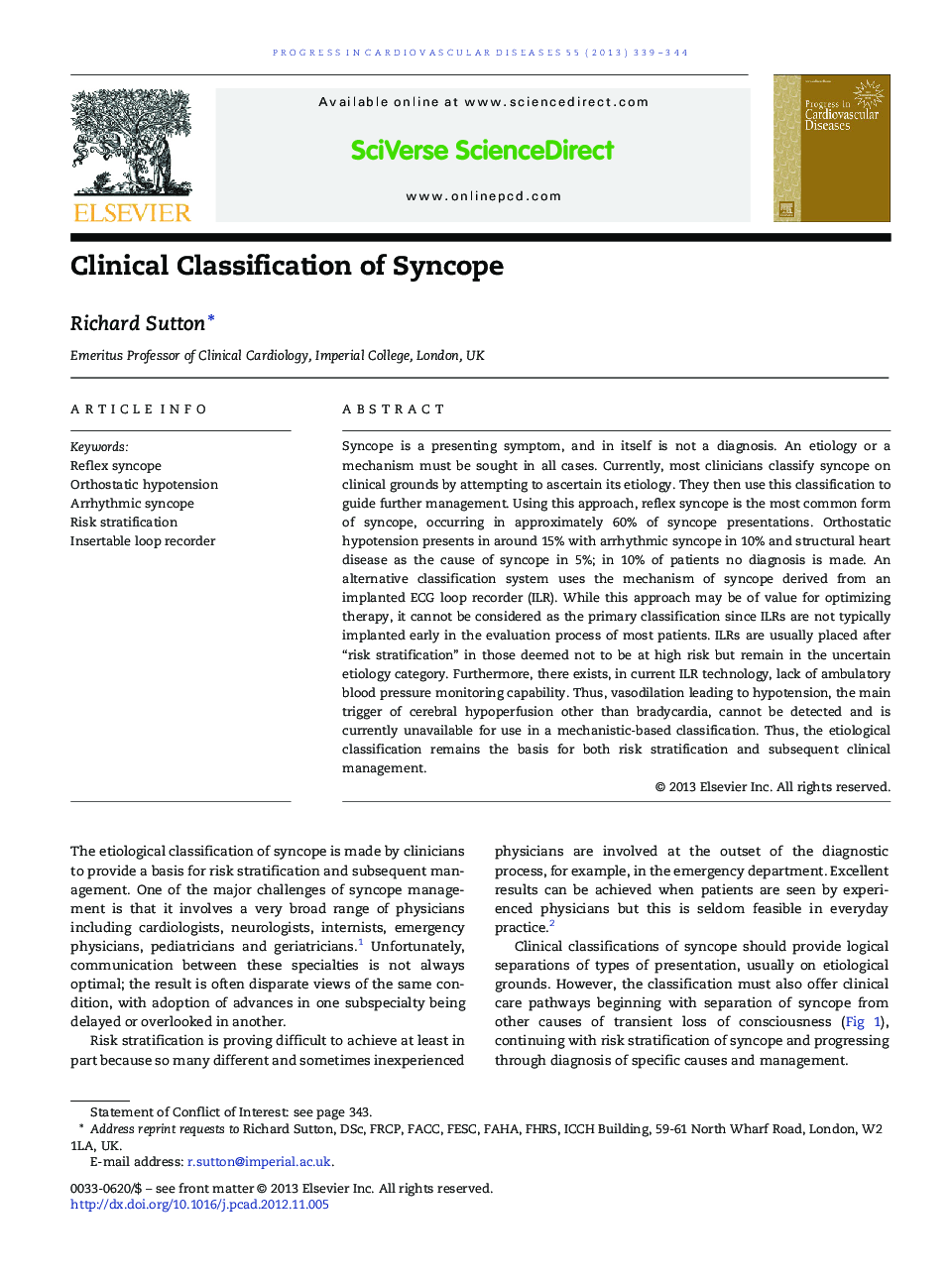| Article ID | Journal | Published Year | Pages | File Type |
|---|---|---|---|---|
| 3006488 | Progress in Cardiovascular Diseases | 2013 | 6 Pages |
Syncope is a presenting symptom, and in itself is not a diagnosis. An etiology or a mechanism must be sought in all cases. Currently, most clinicians classify syncope on clinical grounds by attempting to ascertain its etiology. They then use this classification to guide further management. Using this approach, reflex syncope is the most common form of syncope, occurring in approximately 60% of syncope presentations. Orthostatic hypotension presents in around 15% with arrhythmic syncope in 10% and structural heart disease as the cause of syncope in 5%; in 10% of patients no diagnosis is made. An alternative classification system uses the mechanism of syncope derived from an implanted ECG loop recorder (ILR). While this approach may be of value for optimizing therapy, it cannot be considered as the primary classification since ILRs are not typically implanted early in the evaluation process of most patients. ILRs are usually placed after “risk stratification” in those deemed not to be at high risk but remain in the uncertain etiology category. Furthermore, there exists, in current ILR technology, lack of ambulatory blood pressure monitoring capability. Thus, vasodilation leading to hypotension, the main trigger of cerebral hypoperfusion other than bradycardia, cannot be detected and is currently unavailable for use in a mechanistic-based classification. Thus, the etiological classification remains the basis for both risk stratification and subsequent clinical management.
